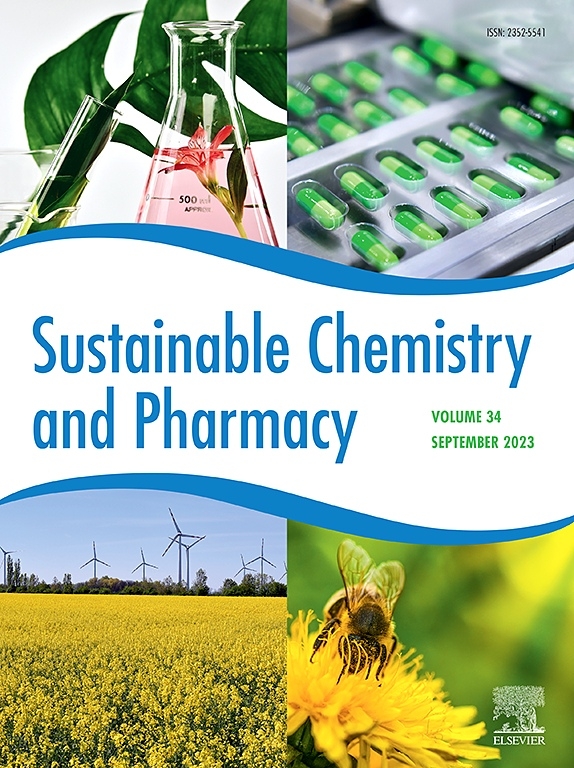Adopting eco-pharmacovigilance practices to reduce risks posed by disinfectants in the environment: Possibility and challenges
IF 5.8
2区 化学
Q2 CHEMISTRY, MULTIDISCIPLINARY
引用次数: 0
Abstract
With the increasing availability and use of sanitary disinfection products, the environmental loads, potential risks, and control strategy for disinfectants as emerging contaminants (ECs) have attracted great attention globally. Eco-pharmacovigilance (EPV) has been conceptually interpreted as the science and activities related to the detection, assessment, understanding, and prevention of adverse effects of pharmaceuticals in the environment. EPV is demonstrated to be a valuable strategy for risk evaluation and source control of pharmaceuticals as ECs. Retrospective re-analyses of original survey data from published literature by the study team, through re-grouping the participants according to their experience of participating in the EPV intervention, showed that the participants having experience with EPV might exhibit significantly enhanced perceptions and attitudes toward environmental issues associated with disinfectants and their source control, suggesting possibility of adopting EPV practices to control disinfectant pollution. This study also compared disinfectants and pharmaceuticals in the environment and identified similarities in contaminant type, environmental risks, anthropogenic source, primary routes of entrance into the environment, and regulation system, which were highly supported by majority EPV participants. Therefore, the environmental issues of disinfectants as ECs might be addressed by adopting EPV practices as upstream solutions, such as avoiding misuse and overuse of disinfection products, green alternatives, take-back and management of unused disinfectants. However, undefined sources, pathways, fate, and limited eco-toxicological data of disinfectants as ECs, lack of disinfectant use standards and regulation considering environmental impacts, the necessity of multidisciplinary involvement and multi-sectoral regulation, and poor public awareness are major challenges.
采用生态药物警戒做法以减少消毒剂对环境造成的风险:可能性和挑战
随着卫生消毒产品的日益普及和使用,消毒剂作为新兴污染物的环境负荷、潜在风险和控制策略受到了全球的广泛关注。生态药物警戒(EPV)在概念上被解释为与药物在环境中的不良影响的检测、评估、理解和预防相关的科学和活动。EPV被证明是一种有价值的风险评估和药物来源控制策略。研究小组对已发表文献的原始调查数据进行回顾性重新分析,并根据参与者参与EPV干预的经验对其进行重新分组,结果表明,有EPV经历的参与者可能对与消毒剂相关的环境问题及其来源控制表现出显著增强的认知和态度,这表明采用EPV实践来控制消毒剂污染的可能性。本研究还对环境中的消毒剂和药品进行了比较,发现了污染物类型、环境风险、人为来源、进入环境的主要途径、监管制度等方面的相似性,得到了大多数EPV参与者的高度支持。因此,作为ec的消毒剂的环境问题可以通过采用EPV实践作为上游解决方案来解决,例如避免误用和过度使用消毒产品,绿色替代品,未使用消毒剂的回收和管理。然而,消毒剂作为ECs的来源、途径、命运和有限的生态毒理学数据不明确,缺乏考虑环境影响的消毒剂使用标准和法规,需要多学科参与和多部门监管,以及公众意识差是主要挑战。
本文章由计算机程序翻译,如有差异,请以英文原文为准。
求助全文
约1分钟内获得全文
求助全文
来源期刊

Sustainable Chemistry and Pharmacy
Environmental Science-Pollution
CiteScore
8.20
自引率
6.70%
发文量
274
审稿时长
37 days
期刊介绍:
Sustainable Chemistry and Pharmacy publishes research that is related to chemistry, pharmacy and sustainability science in a forward oriented manner. It provides a unique forum for the publication of innovative research on the intersection and overlap of chemistry and pharmacy on the one hand and sustainability on the other hand. This includes contributions related to increasing sustainability of chemistry and pharmaceutical science and industries itself as well as their products in relation to the contribution of these to sustainability itself. As an interdisciplinary and transdisciplinary journal it addresses all sustainability related issues along the life cycle of chemical and pharmaceutical products form resource related topics until the end of life of products. This includes not only natural science based approaches and issues but also from humanities, social science and economics as far as they are dealing with sustainability related to chemistry and pharmacy. Sustainable Chemistry and Pharmacy aims at bridging between disciplines as well as developing and developed countries.
 求助内容:
求助内容: 应助结果提醒方式:
应助结果提醒方式:


